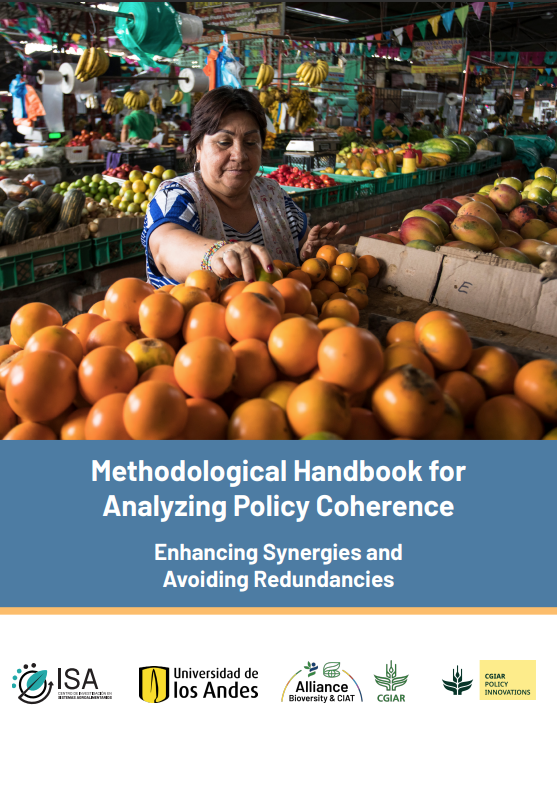The Methodological Handbook for Analyzing Policy Coherence presents a comprehensive framework developed by the Alliance Bioversity & CIAT and the Center for Agrifood Systems Research (Centro ISA) at Universidad de los Andes. This methodological guide provides policymakers, civil society, and international organizations practical tools to assess and improve policy coherence across multiple levels, sectors, and actors. The handbook offers a systematic approach to ensuring that policies not only achieve their intended goals but also align with broader social, economic, and environmental objectives by addressing inconsistencies in the design, implementation, and evaluation of policies.
The methodology described in the handbook follows a structured five-step process:
- Identification and characterization of policies: Through a comprehensive mapping of key characteristics.
- Prioritization of policies: Selecting the most relevant ones based on territorial scope, thematic focus, and alignment with study objectives.
- Identification and prioritization of instruments: From regulatory to economic tools that implement the policies.
- Internal coherence analysis: Evaluating the alignment between objectives, instruments, and target populations within individual policies.
- External coherence analysis: Examining synergies and potential conflicts between policies, focusing on shared objectives, populations, and implementation mechanisms.
This methodology was successfully applied in a case study focused on the water sector in Colombia. The analysis highlighted strong alignment in policy objectives and instruments, identifying areas for improvement in integrating target populations. Additionally, it emphasized the importance of synchronizing administrative processes to enhance synergies between policies and avoid redundancies. The handbook positions itself as an essential resource for strengthening governance and policy frameworks, offering tools to optimize resource allocation, minimize duplication, and maximize the impact of public policies. It is particularly valuable in sectors requiring collaboration among multiple actors to address complex social challenges. By providing a practical and adaptable framework, this handbook enables stakeholders to foster policy integration and coherence, contributing to sustainable and equitable development outcomes.
Buritica, A.; González, K.; Rueda, J.A.; Romero, A.; Vergara, D.; Guevara, P.; Mideros, M.F.; Castro Nunez, A.

